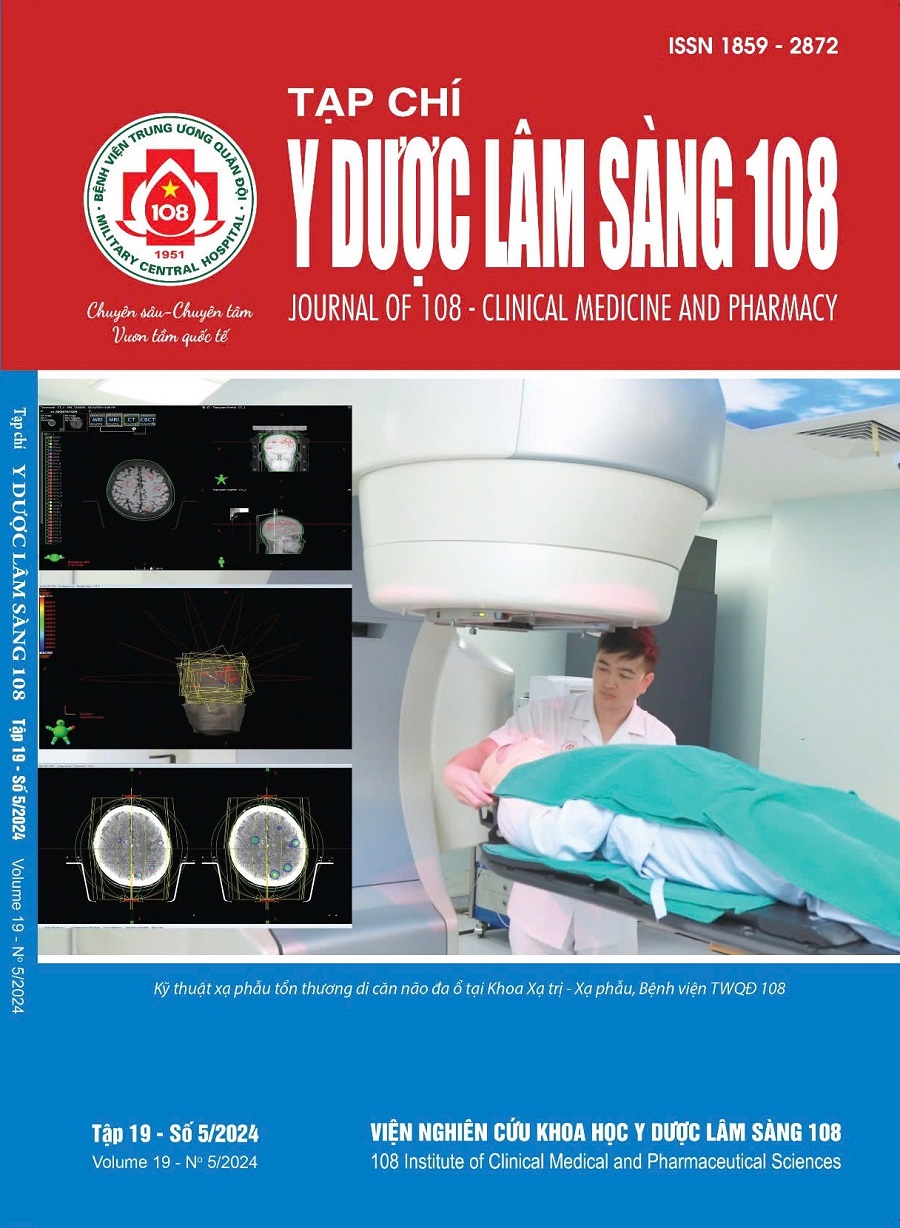Non-invasive prediction models for esophageal varices in cirrhotic patients
Main Article Content
Keywords
Abstract
Objective: To describe the clinical and laboratory characteristics of patients with liver cirrhosis, examine the correlation between these characteristics and the presence of esophageal varices, and subsequently develop a prediction model for esophageal varices in these patients. Subject and method: We conducted a cross-sectional study that enrolled 100 cirrhotic patients from November 2022 to June 2023 at the Gastroenterology Clinic of Cho Ray Hospital. Result: The study population consisted of 100 cirrhosis patients, with 62 males and 38 females, aged from 28 to 87 years (mean age of 56.11 ± 11.22 years). Alcohol intake and hepatitis B, C virus remain the leading causes of liver fibrosis, acount for 79%. The rate of esophageal varices was 46%. There was a significant difference in the amount of hemoglobin, plateles, AST, total bilirubin, INR and albumin in the group of patients with and without esophageal varices (p<0.05). Non-invasive prediction models for esophageal varices in cirrhotic patients combined hemoglobin, platelets, total bilirubin and clinical ascites. The ROC curve analysis demonstrated that the model had an AUC of 0.839. Conclusion: The results of our study demonstrate that the non-invasive prediction models is a reliable predictor of esophageal varices in patients with liver cirrhosis.
Article Details
References
2. Phạm Cẩm Phương, Võ Thị Thúy Quỳnh, Lê Viết Nam và cộng sự (2021) Mô tả một số đặc điểm lâm sàng và cận lâm sàng ở bệnh nhân xơ gan. Tạp chí Y học Việt Nam 508 (1).
3. de Franchis R, Bosch J, Garcia-Tsao G, Reiberger T, Ripoll C; Baveno VII Faculty (2022) Baveno VII–Renewing consensus in portal hypertension. Journal of hepatology 76(4): 959-974.
4. Gebregziabiher HT, Hailu W, Bizuneh S et al (2023) Validation of Noninvasive Diagnosis of Esophageal Varices Among Cirrhotic Patients in Low Income Setting. Heliyon 9 (2023):e23229.
5. Mokdad AA, Lopez AD, Shahraz S et al (2014) & Naghavi M (2014) Liver cirrhosis mortality in 187 countries between 1980 and 2010: a systematic analysis. BMC medicine 12(1): 145.
6. Tiwari PS, Thapa P, Karki B, & KC S (2022) Correlation of Child-Pugh classification with esophageal varices in patients with liver cirrhosis. Journal of Nepalgunj Medical College 20(1): 4-8.
7. Schiff Eugene R, Maddrey Willis C, Reddy K Rajender (2018) Schiff's diseases of the liver. John Wiley & Sons.
8. Korean Association for the Study of the Liver (KASL) (2020) KASL clinical practice guidelines for liver cirrhosis: Varices, hepatic encephalopathy, and related complications. Clin Mol Hepatol 26(2): 83-127.
9. Chen PH, Hsieh WY, Su CW et al (2018) Combination of albumin-bilirubin grade and platelets to predict a compensated patient with hepatocellular carcinoma who does not require endoscopic screening for esophageal varices. Gastrointest Endosc 88 (2): 230-239.e2.
10. Dong TS, Kalani A, Aby ES et al (2019) Machine learning-based development and validation of a scoring system for screening high-risk esophageal varices. Clin Gastroenterol Hepatol 17(9): 1894-1901.
 ISSN: 1859 - 2872
ISSN: 1859 - 2872
